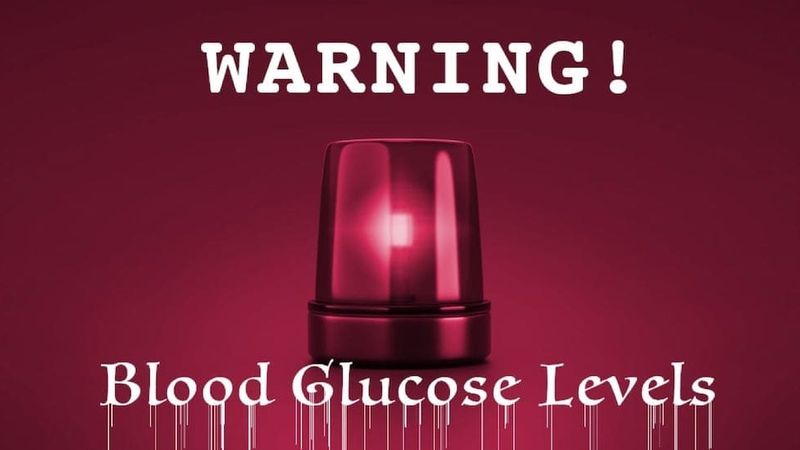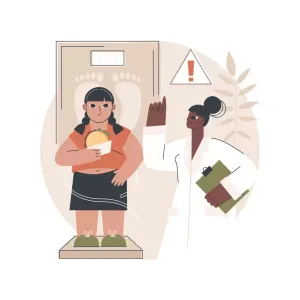

Our Review Process
Our articles undergo extensive medical review by board-certified practitioners to confirm that all factual inferences with respect to medical conditions, symptoms, treatments, and protocols are legitimate, canonical, and adhere to current guidelines and the latest discoveries. Read more.
Our Editorial Team
Shifa Fatima, MSc.
Author
Dr. Apoorva T, MHM.
MEDICAL ADVISOR
Post-Meal Sugars levels
Postprandial blood sugar levels, or post-meal blood sugar, is the level of blood sugar after the consumption of food or certain drinks. It is usually an important measure to check how well the blood sugar levels are being regulated in the body and whether the insulin produced/injected is enough to suffice the overall sugar content in the bloodstream. These levels are also important indicators of overall metabolic health. For diagnostic tests of diabetes and even for a person with diabetes, post-meal blood sugar levels are important as they can help gain a fair idea about how the body responds to certain foods that you eat
Normally, as you eat food and the process of digestion begins, it is natural for the body to witness a rise in the overall blood sugars. This is because the food is broken down into glycogen and then stored as energy. The rise usually peaks about an hour after the consumption of food. After 2 hours, this value is expected to come back to the normal level as the insulin reacts with the excess glucose molecules. Also know more about diabetes diet chart
Table of Contents
How Does Food Affect Blood Sugar?
After consuming a portion of food containing carbohydrates, a person's digestive system converts the digestible carbohydrates into sugar, which is then absorbed into the blood. The pancreas secretes insulin, a hormone that tells cells to take up blood sugar for use as fuel or storage when blood sugar post-meal levels rise. Blood sugar levels start to decrease as cells begin to absorb them. Know about diabetes treatment in pregnancy.
When this occurs, the pancreas begins producing glucagon, a hormone that instructs the liver to begin releasing sugar from its reserves. Insulin and glucagon interact to maintain a constant blood sugar level in all bodily tissues, particularly in the brain. When the body can’t produce enough insulin or fails to use the insulin produced effectively, it leads to diabetes. Know more about high blood sugar symptoms.
Range of Postprandial Blood Sugar Values
A proper measure of the pp sugar range is 2 hours after the meal is consumed. Depending on what you eat and how much time it will take for your food to digest, these sugar levels might differ once checked post meal. For example, since potatoes are complex carbs and they take some time to digest, the sugar reading even 2 hours later might be high.
Knowing the desired range that you ought to be aiming for will help you set and achieve your goals accordingly. Even carb counting becomes easier if you know what your levels are before you eat your meals and where you hope to be 2 hours later.
A normal blood sugar postprandial would be nearly between the range of 130-170 mg/dL. It would be ideal if the values were towards the lower range of the spectrum. The interaction of the bodies differs with different foods, therefore, the normal value is slightly flexible. Also know about pp blood sugar
Healthy Blood Sugar Levels
| Time | Without Diabetes | With Diabetes |
|---|---|---|
| Fasting | 70-99 mg/dL | 80-130 mg/dL |
| 1-2 hours after meals | <140 mg/dL | <180 mg/dL |
| A1C test | <5.7% | <7% |

Out of Range Post-Meal Blood Sugars
Post-Meal Blood Sugar < 60 mg/dl
Low blood sugar levels, especially after having a full meal, are an anomaly and very dangerous If you find your postprandial glucose level to be Less than 60, you need to correct that with 15 grams of carbs immediately. You can replenish the sugar levels in the body with a liquid like juice or any soft drink or you can choose to eat something sweet. For a sugar level of less than 60, liquids would be the best option as it takes lesser time to digest. This would mean that the sugar would get absorbed in the blood immediately and you will begin to feel better faster.
Post-Meal Blood Sugar between 120 - 140 mg/dl?
Readings between the range of 120-140 mg/dL post meals are ideal. If, upon a glucometer check, these are your readings you need to pat yourself on the back and make sure that you are keeping up with the carb counting methods similarly. Additionally, make sure that you note and remember the dose of insulin you took to achieve those numbers and titrate your other doses accordingly. A normal PP blood sugar range is not stressful on the body and can be very helpful in the long run. Also know more about diabetes diet chart.
How can I check my blood sugar?
Blood sugar level after breakfast or at any time of the day can be conveniently checked by a device called a glucometer, which is easily available in the market. It’s a portable machine, and very easy to use. The kit has a reading device, a lancet to make the prick to collect the blood sample, and test strips. Transfer the blood sample onto the test strip, and insert it into the machine to check the reading.
Diabetic people can also use a continuous Glucose Monitoring Device (GMD) that has a sensor that can be inserted under your skin, preferably the arm or the belly, and it tracks the blood glucose level and gives out the reading to the cell phone or a wearable device every few minutes.
Also read about blood sugar random level and how to test for it.
When should I check my blood sugar?
Diabetic people may be required to check their blood sugar level at different intervals during the day depending on the type of diabetes, age, and if they are on any kind of medication.
Typically a diabetic person should monitor:
- Blood sugar level soon as they wake up (empty stomach).
- Before food sugar level.
- Blood sugar level 2 hours after meal (postprandial)
- At bedtime.
People having type 1 diabetes and type 2 diabetes people who take insulin require more frequent monitoring throughout the day.
Causes for Low Blood Sugar in diabetes?
People with diabetes truly live unpredictable lives. At times, despite the same routine, their blood sugar levels might differ and cause discomfort and trouble. Not being able to understand the proper patterns of these levels can lead to frustration and anxiety. A major cause of anxiety can be low blood sugar levels.
Several factors can lead to hypoglycemia:
- Too much insulin
- Incorrect carb counting
- Hormonal changes in the body
- Rigorous exercise without a carb-filled snack pre-workout.
- Skipping meals or a delay in the meals
Identifying and correcting episodes of hypoglycemia immediately can be helpful in the long run as it causes less stress on the heart. Know about Indian breakfast for diabetes .
Preventing Low Blood Sugar?
While it is important to treat low blood sugars, the better way to go about this would be to prevent the occurrence in the first place. Since hypoglycemic episodes are far more troublesome than hyperglycemic ones, looking to prevent bouts of low sugar is the ideal approach. The best way to avoid your sugars from dropping too low would be to check your blood sugars frequently. Additionally, recognizing signs of low blood sugar levels before they drop too low would be a great skill to learn. This will help you get more in-tune with the signs and signals of your body and prevent the lows.
Maintaining a healthy eating chart and regular physical exercises would also help with improving the insulin sensitivity of the body, thereby, leading to better regulation and moderation of sugar levels. Also know about fasting blood sugar.
Post-Meal Blood Sugar Chart – Adults
For metabolism, our body maintains a level of blood glucose, which also varies throughout the day. To test whether or not you have diabetes, you should get your postprandial (PP) glucose level tested. What is post-meal glucose or postprandial glucose test? This is a diabetes test to track the response of your body to starch and sugar consumed in the meal. It allows the doctor to examine the insulin activity.
Typical recommendations for blood sugar after meal are as below:
| Category | PP Sugar Level Measurement (2 hours after eating) |
|---|---|
| Adults without diabetes who are not pregnant | 90-140 mg/dL |
| Adults with diabetes who are not pregnant | <180 mg/dL |
| Adults with diabetes taking mealtime insulin | <180 mg/dL |
| Adults with diabetes not taking mealtime insulin | <140 mg/dL |
| Adults with gestational diabetes | <140 mg/dL - one hour after eating. <120 mg/dL - two hours after eating food. |
| Pregnant adults with preexisting type 1 or type 2 diabetes | <110-140 mg/dL one hour after eating food <100-120 mg/dL two hours after eating food |
Note: The above values may vary in some individuals based on their daily routine, eating habits, exercise routine, age, medicine consumption, and genetic composition.
Also read about benefits of dates for diabetes
Post-Meal Blood Sugar Chart - Children
The PP sugar level range might differ in different people based on their age and the time of the day. Even the type of food consumed would impact these readings. Since children are known to have a higher metabolism, their post-meal blood sugar levels are primarily known to be in the normal range with a few exceptions.
| Category | Before meals | After meals |
|---|---|---|
| Children (below 6 years of age) | 100-180 mg/dL | Approximately 180 mg/dL |
| 6-12 years of age | 90-180 mg/dL | Up to 140 md/dL |
| 13-19 years of age | 90-130 mg/dL | Up to 140 md/dL |
| 20+ years of age | 70-130 mg/dL | Less than 180 mg/dL |
These values are not set in stone and might depend on the personal characteristics and routine of each person. Even the value of ‘normal’ may differ in people of the same age category owing to different factors like genetics, fat and weight, metabolism, exercise, daily schedule, etc.
Typical recommendations for blood sugar levels after meals are as below:
Fluctuating Post-Meal Blood Sugars
If the PP blood sugar level is more or less not in the normal range and is fluctuating rapidly, it can lead to a few consequences like –
- Increased appetite – People who undergo drastic fluctuations in these levels witness feeling more hungry and tend to eat more calories throughout the day.
- Mood changes – Larger spikes in blood sugar levels are linked to a 38% higher score on depression scales and experience almost 55% more mood disturbances.
- Fatigue – In research conducted with over 1200 participants, a higher PP sugar level range was linked to feeling more tired and less alert within an hour post meals.
- Inflammation – Elevated levels of sugars post meal promoted an increase in the short-term inflammation in the body that can lead to health problems.
Bottomline
Post-meal blood sugar levels need to be in the optimal range for the best possible overall health in the short term and the long run. Try to avoid frequent lows and highs as they can also cause several issues. Follow a healthy diet chart and engage in routine physical exercise to maintain a balanced lifestyle and sugar levels. Also know about sugar measuring machine.
FAQs
Is 60 mg/dL considered Low Blood Sugar?
Yes, 60 mg/dL is a very low level of blood sugar that, if untreated, can lead to loss of consciousness and other complications. Make sure to treat your lows as soon as you are aware of them.
How can I quickly raise my Blood Sugars when Low?
To raise your blood sugar levels fast, you need to consume 15 grams of glucose. The fastest way to up these levels would be via liquid consumption of glucose through juices or sugar water. Glucose gels are another quick way to approach dealing with lows.
What are some reasons causing Post-Meal Blood Sugars to be high?
Your PP blood sugar could be high if:
- You had a high-carb meal
- You took a low dose of insulin
- Your sugars were already high before the meal
- If you are feeling ill
How do you control Post-Meal Blood Sugars?
You can control PP blood sugar by taking the right amount of insulin depending on the number of carbs you are consuming in a meal. Additionally, keeping a strict check on your post-meal levels regularly would also help identify patterns and change them.
Why are Post-Meal Blood Sugars higher than Fasting?
Your post-meal levels would be higher than fasting because of the food you consume. Since the food interacts and breaks down in the body in the form of glycogen and then is used as energy, the leftover glucose molecules can tend to make the sugar levels higher.
Which is more important Fasting or Post-Meal Blood Sugars?
Testing both these levels and making sure to maintain an optimal range overall is equally important. Of course, fasting sugars can set the course for the day, however, the other values also cannot be neglected.
What happens if Post-Meal Blood Sugars is High?
If the post-meal blood sugars are high, the body can feel drained and lethargic. Correcting it via an insulin dose or some physical exercise (if the time is right) would be important.
What is the sugar level after breakfast?
Blood sugar pp two hours after the start of a meal should be less than 180 mg/dL.
What is pp sugar test?
After a meal is postprandial. This test examines how your body reacts to carbs and sugar after a meal. Blood glucose or blood sugar levels quickly increase as food is digested in the stomach.
References
- https://joinzoe.com/learn/postprandial-blood-sugar
Disclaimer
This website's content is provided only for educational reasons and is not meant to be a replacement for professional medical advice. Due to individual differences, the reader should contact their physician to decide whether the material is applicable to their case.








